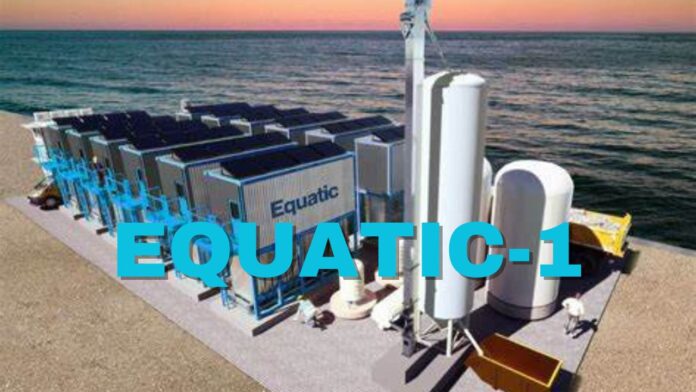Equatic-1 an Ocean-Based Carbon Plant Aims to Tackle Climate Crisis
Equatic-1 is set to become the world’s largest ocean-based carbon dioxide removal facility. Singapore, a country leading in environmental innovation, is on the verge of a major advancement in the fight against climate change. Let’s delve into the details of this groundbreaking project.
The Equatic-1 Initiative
Last week, Singapore’s national water agency, PUB, joined forces with Equatic, a US-based startup, to announce their collaboration. The US$20 million project aims to remove an impressive 3,650 metric tonnes of carbon dioxide (CO2) per year from seawater. This translates to a daily removal capacity of 10 metric tonnes—a remarkable feat compared to Equatic’s existing pilot plants in Los Angeles and Singapore, which each extract a mere 100 kilograms of CO2 daily since March 2023.
How Does Equatic-1 Work?
The heart of Equatic-1 lies in its novel electrolytic process, developed by scientists from the Institute for Carbon Management at the University of California, Los Angeles (UCLA). Here’s how it operates:
- Seawater Electrolysis: Equatic-1 employs oxygen-selective anodes to pass an electrical current through seawater sourced from PUB’s desalination plants. This process splits the water into its carbon-negative hydrogen and oxygen components.
- Carbonate Formation: Simultaneously, dissolved and atmospheric CO2 react with calcium and magnesium in the seawater, forming solid carbonates. This mimics the natural process of seashell formation.
- Alkalinity Restoration: Before being returned to the ocean, the treated seawater’s alkalinity is restored by dissolving alkaline rocks.
The Scale and Impact
Equatic-1’s full-scale operation is expected to match the CO2 emissions of nearly 850 individuals annually1. While this represents a significant step forward, some scientists raise valid concerns about the broader implications of ocean-based carbon removal.
The Debate
Equatic’s project encapsulates a broader debate among experts. On one side are those who fear that rushing into geoengineering solutions could inadvertently harm ecosystems. On the other side are those who argue that the urgency of the climate crisis necessitates exploring all viable options.
Economic Considerations
Beyond the environmental impact, the economics of Equatic-1 are crucial. The project’s success will depend on balancing costs, scalability, and long-term sustainability.
As Equatic-1 takes shape in Tuas, Singapore, it symbolizes our collective commitment to a greener future. While red flags are raised, the world watches with anticipation, hoping that this ocean-based carbon plant will indeed help save our planet.
Stay tuned for further updates as Equatic-1 embarks on its mission to combat climate change—one metric tonne of CO2 at a time.




















